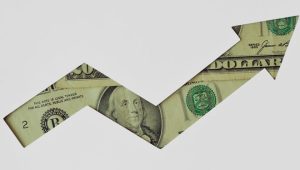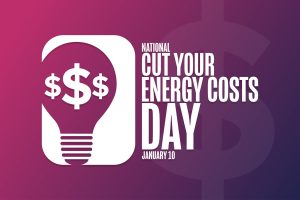
Sure, it might be nice to be independently wealthy and not have to worry about pinching a penny here or there. But how many of us are really able to ignore a great deal? It’s extra money to put into an emergency fund, pay off credit cards, add to retirement, or just splurge somewhere else.
Numerous tips, tricks, and advice on saving money are readily available. While most of them are great, not all apply to every situation. Here are three ways people think they’ll save money, but they usually don’t.
Annual Subscription
The discounted annual subscriptions are usually cheaper than paying monthly. But when you put things into perspective, it might be costing you more.
For example, Amazon Prime subscription costs $14.99 per month. But the annual subscription, currently priced at $139, will give a $40 savings.
But do you use Amazon prime every month?
According to the Diffusion Group, 79% of Prime subscribers sign up for free shipping. If you’re using Prime benefits for less than nine months, you’re already losing money with an annual subscription.
The products on the Amazon marketplace are comparatively expensive. Rachana Shakya, a small business owner and a seller on Amazon, says, “it’s almost impossible to break even if your profit margins are less than 300% on the platform. Consumers also pay Amazon’s steep selling fees.” Consumers lose money if they don’t shop around.
Another scenario where this conventional money-saving trick will not work is with a gym membership. According to finder.com, Americans spend $1.3 billion on unused gym memberships. Those who are unsure if they’ll stay motivated on their New Year’s resolution to get fit should not sign up for a long-term contract.
Warehouse Club Membership
The warehouse club membership is a paid benefit for shoppers to save money by buying in bulk. The US warehouse club and supercenter is a billion-dollar industry. According to Statistica, it generates $40 billion in monthly retail sales. Costco and Sam’s Club are the leaders in this field.
There are savings to bulk purchases and the club’s product line, but is buying in volume essential? Or are we simply buying them for the discount?
Getting more for less is good when necessary, or they’ll lose value. Data suggests that 80% of Americans discard consumable food due to misinterpretation of expiry labels. Chances are we buy more than we can consume and contribute to spoilage.
Warehouse clubs have various membership levels ranging from $45 to $120. For a $120 membership, you must spend $6,000 to cover the fee. While you can easily spend $6,000 a year, a $500 expense in one warehouse every month does not apply to everyone. And unlike in local grocery stores, you cannot find all the items you need in the warehouse club.
Using Cash Instead of Credit Cards
If you ever listen to the Dave Ramsey show, you’ll hear it a million times on why he prefers cash for all purchases and how credit cards will make us broke.
But are credit cards the culprit of the financial crisis?
Saving money with cash purchases is a method of forced savings by limiting access to cash. It might work in some cases, but the best way to save money is by being intentional.
Handling cash is inefficient and inconvenient. The changes after purchase are cumbersome to manage and easy to lose. Unlike credit cards, paper money is not secure. If you lose it, you can’t get it back. You’re also losing cashback rewards, fraud protection, and some of the benefits credit cards offer.
You’ll have an online record of all spending for expense tracking and financial planning with a credit card. You can perform online as well as in-store contact-less transactions. It is also beneficial while traveling.
Refinance
Buying a home is a substantial long-term expense. The mortgage is usually a 15- to 30-year term. Therefore, everyone wants to save money when possible. Home refinance helps you save money by reducing loan terms or monthly premiums. However, depending on the refinance contract, it may not make any difference or you may even lose money.
Refinance, like every home mortgage, comes with a closing cost. It is usually 3%-6% of the loan amount to cover loan origination, underwriting, and administrative fees. The closing price is never free, not even for a no-closing-cost mortgage refinance. It either goes into the loan, or you have to pay upfront. The closing cost could be significant enough to eat up all the savings depending on the interest rate deduction.
If the loan extends to the original term, the refinance will lose you money. It will solely reduce monthly payments, which is beneficial if you struggle to keep up with the current installments.
For example, a $300,000 home at 20% down with a 5% interest rate on a 30-year loan term costs $223,813.88 in interest only. The monthly payment on the loan is $1,288.37. You’d have paid $109,825.59 interest in 10 years.
If you were to refinance the remaining loan after ten years at a 4.5% interest rate for the next 30 years, your monthly premium would drop to $973.96, but you’d pay a total of $158,402.96 in interest on the refinanced loan. Therefore, you’d pay $268,228.55 (higher than the initial interest) with a lower interest rate and extend the loan term.
Shopping In-Store Vs. Online
Shopping in-stores rather than online is one of the rare, but recommended personal finance advice. The theory is that the drive to stores will demotivate people from going shopping altogether. While online shopping boasts easy access from the comfort of your bedroom, the FirstInsight report shows impulse purchases are more common during in-store shopping.
People tend to spend more in stores. The trend may shift in the future with technology, but currently, retail therapy still contributes to more spending than internet shopping.
One of the significant drawbacks to in-store shopping is the missed cost-savings opportunity on products. Some online products are inexpensive because no in-person customer support team and building overheads are required.
Price comparison is easier on online products that help find cheaper alternatives. You’ll also have access to online discount hunting applications like Capital One Shopping and Honey that search and apply discounts automatically without having to clip coupons.
Saving money is usually plain and simple, but sometimes it depends on a shopper’s situation. What may seem like a cost-saving might end up becoming less economical. It does not hurt to analyze the money-saving advice you receive for a minute or two and ask yourself how it applies to you, and if it will actually help.




